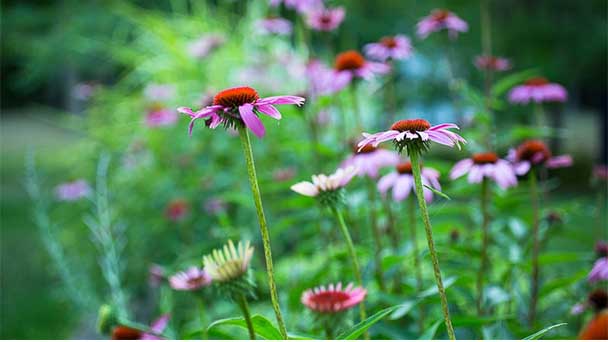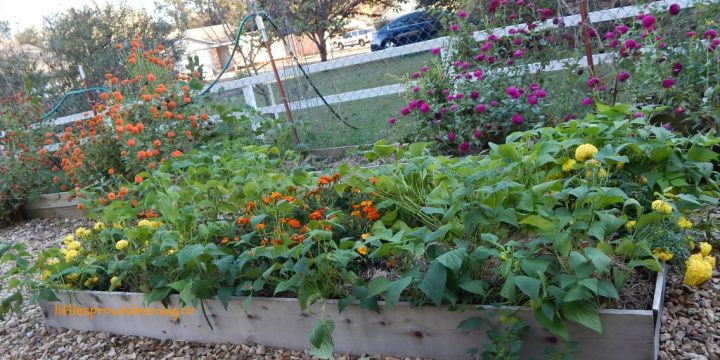When to till garden in spring
Written by Joy
Sep 28 2020

After the beginning of spring, what's the proper time to till garden in spring? Due to the different climate and natural conditions, the time of spring plowing is also different. So, when to till garden in spring? What should be paid attention to when preparing fertilizer for spring ploughing?

Spring plowing time is generally predicted by the National Meteorological Center. Recalling the spring ploughing and spring sowing time in various places are: mid-to-early March in central and northern South China, central and southern Yunnan, Sichuan Basin, and eastern Northwest China; from late March to early April in Jiangnan and most of the southwestern region, Jianghuai, Jianghan, and southern Xinjiang; April In the middle and late part of Xinjiang, most of Northeast China, North China, Huanghuai and Tibet; in early May the eastern and western agricultural areas of Northeast China.
The spring plowing time in each region needs to be determined according to the actual temperature, from the south of the Yangtze River (early March) to the north in turn and postponed to May. The further north the spring plowing season becomes later.
Specifically
1. North China: generally between early March and April.
2. Northeast China: The common time for spring plowing is in late April and early May.
3. Southern region: For example, the temperature in the south of the Yangtze River has risen rapidly. Spring plowing starts in early March every year, mostly around late February.
4. Northeast China: The general time for spring plowing in Northeast China should be in late April and early May.
Farmyard manure should be piled and decomposed before application. For field crops, especially in the north, the soil temperature is low during spring sowing, and organic fertilizer is difficult to plow and decompose. Therefore, it is best to apply it in the autumn of the previous year.
The chemical fertilizer used as the base fertilizer should mainly choose the compound fertilizer with the proper nutrient distribution ratio, or the appropriate amount of urea, super-phosphate, potassium chloride or potassium sulfate and other elemental fertilizers (fertilizers containing only one nutrient). Phosphoric acid is used in the north. Di-ammonium is used as a basal fertilizer or seed fertilizer, but diammonium is a high-phosphorus, low-nitrogen, and potassium-free binary compound fertilizer. It should be used in combination with appropriate nitrogen and potassium fertilizers.
In order to improve the utilization rate of fertilizers, especially when one-time fertilization is used, slow-release and controlled-release fertilizers can be used. Microbial fertilizers can be used for seed dressing or as base fertilizer application with organic fertilizers. Slow-release and controlled-release fertilizers and microbial fertilizers are both new types of fertilizers. You should pay more attention to the quality of fertilizers when purchasing.
For long-term high-yield fields that do not apply organic fertilizers, you should pay attention to supplementary application of middle and trace elements. You need to focus on the nutrient deficiency of sensitive crops, such as rice and corn prone to zinc deficiency, cotton and rapeseed prone to boron deficiency, peanuts and soybeans prone to deficiency of calcium, iron and molybdenum. If it is lacking, it can be applied with appropriate amount of foliar fertilizer combined with base fertilizer.

Spring plowing time is generally predicted by the National Meteorological Center. Recalling the spring ploughing and spring sowing time in various places are: mid-to-early March in central and northern South China, central and southern Yunnan, Sichuan Basin, and eastern Northwest China; from late March to early April in Jiangnan and most of the southwestern region, Jianghuai, Jianghan, and southern Xinjiang; April In the middle and late part of Xinjiang, most of Northeast China, North China, Huanghuai and Tibet; in early May the eastern and western agricultural areas of Northeast China.
The spring plowing time in each region needs to be determined according to the actual temperature, from the south of the Yangtze River (early March) to the north in turn and postponed to May. The further north the spring plowing season becomes later.
Specifically
1. North China: generally between early March and April.
2. Northeast China: The common time for spring plowing is in late April and early May.
3. Southern region: For example, the temperature in the south of the Yangtze River has risen rapidly. Spring plowing starts in early March every year, mostly around late February.
4. Northeast China: The general time for spring plowing in Northeast China should be in late April and early May.
Precautions for spring plowing and fertilizer preparation
Which fertilizers should be prepared for spring farming. Fertilizers should be based on organic fertilizers and combined with nitrogen, phosphorus and potassium fertilizers. The specific fertilizer preparation varies from crop to crop. For field crops such as corn, rice, soybeans, cotton, spring wheat, etc., organic fertilizers are recommended. All organic fertilizers or most phosphorus and potassium fertilizers and nitrogen fertilizers not exceeding half of the total are used as base fertilizers, and the rest are used as top dressing or plant fertilizer. For fruit trees and vegetables, it is necessary to use organic fertilizers. Part of nitrogen, phosphorus, and potassium fertilizers are used as base fertilizers, and the rest are used as top dressings. More attention should be paid to the supplement of middle and trace elements.Farmyard manure should be piled and decomposed before application. For field crops, especially in the north, the soil temperature is low during spring sowing, and organic fertilizer is difficult to plow and decompose. Therefore, it is best to apply it in the autumn of the previous year.
The chemical fertilizer used as the base fertilizer should mainly choose the compound fertilizer with the proper nutrient distribution ratio, or the appropriate amount of urea, super-phosphate, potassium chloride or potassium sulfate and other elemental fertilizers (fertilizers containing only one nutrient). Phosphoric acid is used in the north. Di-ammonium is used as a basal fertilizer or seed fertilizer, but diammonium is a high-phosphorus, low-nitrogen, and potassium-free binary compound fertilizer. It should be used in combination with appropriate nitrogen and potassium fertilizers.
In order to improve the utilization rate of fertilizers, especially when one-time fertilization is used, slow-release and controlled-release fertilizers can be used. Microbial fertilizers can be used for seed dressing or as base fertilizer application with organic fertilizers. Slow-release and controlled-release fertilizers and microbial fertilizers are both new types of fertilizers. You should pay more attention to the quality of fertilizers when purchasing.
For long-term high-yield fields that do not apply organic fertilizers, you should pay attention to supplementary application of middle and trace elements. You need to focus on the nutrient deficiency of sensitive crops, such as rice and corn prone to zinc deficiency, cotton and rapeseed prone to boron deficiency, peanuts and soybeans prone to deficiency of calcium, iron and molybdenum. If it is lacking, it can be applied with appropriate amount of foliar fertilizer combined with base fertilizer.
Latest Updated
- Benefits of Bugleweed - 7 Science-backed Health Benefits
- Bugleweed Dangers & Side Effects - Is It Poisonous?
- How to Plant Evergreen Trees - What You Should Know
- When to Plant Evergreens - Grow Guide for Evergreen Trees
- 12 Wonderful Evergreen Shrubs for Your Garden
- 12 Popular Evergreen Plants with Pictures for Beginners
- When And How To Prune A Lilac Bush Like a Pro
- How to Grow & Care for Lilac Vine (Hardenbergia Violacea)
- Japanese Lilac Tree (Syringa Reticulata) Care & Propagation Guide
- Shumard Oak Pros and Cons - What to Know
Popular Articles
- Winter maintenance of Antirrhinum Majus
- How to Grow Terminalia Mantaly Tree
- How to Grow and Care for Crossostephium Chinense
- How to grow Antirrhinum Majus in spring
- Peristeria Elata (Dove Orchid) Profile: Info & Care Guide
- Underwatered Snake Plant (Sansevieria Trifasciata) - Signs And How To Fix
- How to Care for Brazilian Jasmine Plant (Mandevilla Sanderi)
- How to Grow & Care for Graptopetalum Purple Delight in Summer
- Rosa Chinensis (China Rose): Plant Growing & Care Tips
- How to Care for Baby Sun Rose (Aptenia Cordifolia)